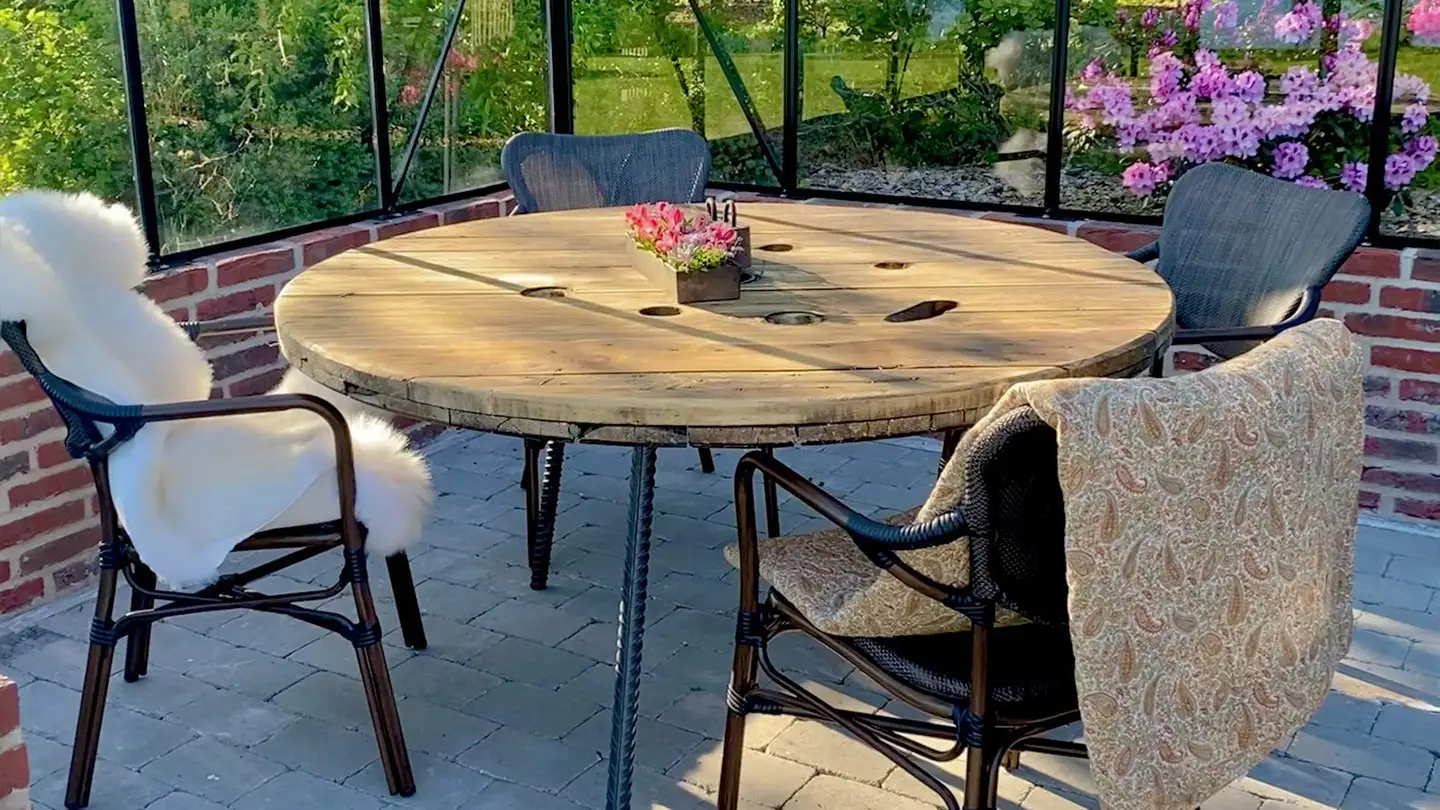
Greenhouse Table
A greenhouse table is more than just furniture—it’s the heart of your space. Perfect for potting, planning, or relaxing, it adds structure, comfort, and joy. The right table makes your greenhouse efficient and welcoming, combining practical use with a cozy atmosphere.
Why Every Greenhouse Needs a Table
In the context of a greenhouse, a table is more than just a flat surface — it’s a central workspace, a place to organise, plant, and rest. It gives structure to the greenhouse layout, serving as a multifunctional hub where tools are gathered, trays are arranged, and creativity can flow freely.
For serious gardeners, a sturdy table is essential for potting, seed propagation, and sorting harvests. For hobbyists and lifestyle users, it becomes a place to enjoy a drink, write garden notes, or host friends. In both cases, a greenhouse table offers comfort, improves workflow, and helps separate activities into clear zones.
Without a table, tasks are done on the ground or using unstable surfaces — which can quickly lead to mess, waste, or physical strain. With the right table, everything becomes more accessible and pleasant, transforming daily tasks into mindful rituals.
Greenhouse Tables and Their Purposes
Greenhouse tables come in several designs, each tailored to different tasks and greenhouse sizes. The most common types include:
Potting tables: Designed specifically for gardening, with features like a raised edge, built-in shelves, and space for soil, trays, and hand tools. These are ideal for active growers who need a clean, functional zone for planting.
Folding or collapsible tables: Perfect for smaller greenhouses where flexibility is key. These can be stored when not in use and brought out as needed, especially during seedling season or harvest time.
Display tables: Lower, often more decorative tables used to showcase potted plants, herbs, or floral arrangements. These add aesthetic value and help you turn your greenhouse into a relaxing space.
Dining or bistro-style tables: Common in lifestyle greenhouses or orangeries, where the table is used for leisure rather than work. Paired with chairs or benches, they create a beautiful setting for meals among the plants.
Some gardeners choose to combine functions, using modular tables that serve as both display and workstations. Others incorporate wheels or adjustable heights to maximise flexibility. The key is to choose a table that reflects how you use your greenhouse — and how you want to feel while you’re in it.
What Makes a Good Greenhouse Table?
Because greenhouses are humid, variable environments, not all materials are suitable for tables. Choosing the right one ensures durability, hygiene, and ease of maintenance.
Metal tables, especially powder-coated steel or aluminium, are durable, rust-resistant, and ideal for potting work. Many metal tables feature slatted or mesh tops for improved drainage and airflow, reducing mould and moisture build-up under pots.
Wooden tables offer warmth and charm, blending beautifully with the natural surroundings. Teak, cedar, and acacia are excellent choices thanks to their natural resistance to moisture and pests. However, wooden tables require occasional treatment with oil or sealant to stay in top condition.
Plastic or recycled composite tables are lightweight, low-cost, and easy to clean, though they may lack the visual appeal of wood or metal. These are often used as temporary or secondary surfaces.
Glass-topped tables, while less common for work, are stylish options for orangeries or greenhouses used for entertaining. They reflect light and add a contemporary feel, but should be placed carefully to avoid overheating in full sun.
No matter the material, a good greenhouse table should be stable, easy to clean, and able to withstand changes in humidity and temperature. Extras like shelves, hooks, or drawers can add valuable storage without taking up extra space.
How to Integrate a Table
The best tables are those that feel naturally placed within your greenhouse. Start by identifying what role the table will play — is it for planting, planning, or pausing?
If your table will serve primarily as a workstation, position it near your storage shelves, water supply, or tool hangers. Ideally, it should be placed where there’s good light and air circulation, but not so exposed that it overheats.
For display or dining tables, consider placing them in a central or shaded part of the greenhouse where they won't disrupt plant zones. Adding a rug, some ambient lighting, or a few chairs can transform the area into a mini living room surrounded by greenery.
Tables can also serve as zoning tools: separating humid growing sections from dry workspaces, or distinguishing edible plants from ornamentals. By giving each zone its own character, the table becomes an anchor for layout and flow.
In smaller greenhouses, folding tables or narrow console-style surfaces work well along walls or under shelving. Don’t underestimate vertical space — a slim table with wall storage above is often more efficient than a wide, bulky unit.
Inspiration: Hygge Moments at the Greenhouse Table
As a Danish-rooted brand, we see the greenhouse table as the ultimate expression of hygge. It’s where warmth, plants, and presence meet. It’s where seeds become harvests, where notebooks meet tea mugs, and where dirt under the fingernails feels just right.
Whether you’re enjoying early-morning sunlight, potting lavender for the terrace, or reading by lantern-light on a crisp autumn evening — the table is the space where you pause. It’s not just a work surface. It’s a moment of quiet. A celebration of routine. A creative studio. A sanctuary.
Many of our customers style their greenhouse tables with personal touches — linen cloths, hand tools, scented candles, or even framed photos. Others keep it bare and functional. There’s no one way to design a greenhouse table — the beauty lies in making it your own.
When chosen with care, a greenhouse table becomes more than furniture. It becomes a ritual.

_64049.webp)

_64048.webp)
_64047.webp)

_64046.webp)

_64044.webp)
_64043.webp)
_64042.webp)
_64041.webp)
_64040.webp)


_64033.webp)

_64030.webp)
_64029.webp)